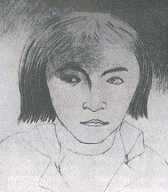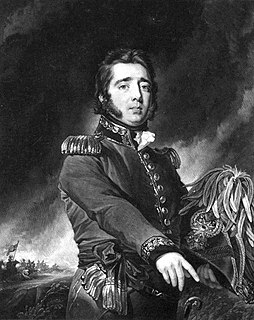 W
WLibertadores were the principal leaders of the Latin American wars of independence from Spain and Portugal. They are named that way in contrast with the Conquistadors.
 W
WJosé Gervasio Artigas Arnal is a national hero of Uruguay, sometimes called "the father of Uruguayan nationhood".
 W
WLouis-Michel Aury was a French privateer operating in the Gulf of Mexico and the Caribbean during the early 19th century.
 W
WMelchior Aymerich was a Spanish general and provincial administrator, serving as the last president of the Royal Audience of Quito from April until May 1822. One of the last Spanish colonial provinces to be overthrown during the final years of the Spanish American wars of independence, he was defeated by rebel General Antonio José de Sucre at the Battle of Pichincha on May 24, 1822, formally surrendering two days later.
 W
WJoseph Blanco White, born José María Blanco y Crespo, was a Spanish political thinker, theologian, and poet.
 W
WSimón José Antonio de la Santísima Trinidad Bolívar y Ponte Palacios y Blanco, also colloquially as El Libertador, or Liberator of America was a Venezuelan military and political leader who led what are currently the countries of Venezuela, Bolivia, Colombia, Ecuador, Peru, and Panama to independence from the Spanish Empire.
 W
WDomingo Cullen was the governor of province of Santa Fe, Argentina during 1838.
 W
WGabino or Gavino Gaínza y Fernández de Medrano was a Spanish military officer and politician in Spain's American colonies. During the Latin American wars of independence, he initially fought on the royalist side, in Chile. Later, in Guatemala, he supported independence and became the first president of a united Central America extending from Soconusco through Guatemala, El Salvador, Honduras, Nicaragua and Costa Rica.
 W
WBaltasar Hidalgo de Cisneros y de la Torre (1756–1829) was a Spanish naval officer born in Cartagena. He took part in the Battle of Cape St Vincent and the Battle of Trafalgar, and in the Spanish resistance against Napoleon's invasion in 1808. He was later appointed Viceroy of the Viceroyalty of the Río de la Plata, replacing Santiago de Liniers. He disestablished the government Junta of Javier de Elío and quelled the Chuquisaca Revolution and the La Paz revolution. An open cabildo deposed him as viceroy during the May Revolution, but he attempted to be the president of the new government junta, thus retaining power. The popular unrest in Buenos Aires did not allow that, so he resigned. He was banished back to Spain shortly after that, and died in 1829.
 W
WGeneral Gregor MacGregor was a Scottish soldier, adventurer, and confidence trickster who attempted from 1821 to 1837 to draw British and French investors and settlers to "Poyais", a fictional Central American territory that he claimed to rule as "Cazique". Hundreds invested their savings in supposed Poyaisian government bonds and land certificates, while about 250 emigrated to MacGregor's invented country in 1822–23 to find only an untouched jungle; more than half of them died. Seen as a contributory factor to the "Panic of 1825", MacGregor's Poyais scheme has been called one of the most brazen confidence tricks in history.
 W
WJosé María Dionisio Melo y Ortiz was a Colombian general and politician of Pijao ancestry who fought in the South American wars of independence, and who in 1854 rose to power and held the presidency of Colombia.
 W
WRosa de Montúfar y Larrea-Zurbano was a noblewoman and aristocrat from Quito, the daughter of Juan Pío Montúfar and a prominent hero of the Ecuadorian War of Independence.
 W
WFrancisco Burdett O'Connor was an officer in the Irish Legion of Simón Bolívar's army in Venezuela. He later became chief of staff to Antonio José de Sucre and minister of war in Bolivia.
 W
WDoña Manuela Sáenz de Vergara y Aizpuru was an Ecuadorian revolutionary heroine of South America who supported the revolutionary cause by gathering information, distributing leaflets, and protesting for women's rights. Manuela received the Order of the Sun, honoring her services in the revolution.
 W
WArthur Sandes was the commanding officer of the Rifle Battalion of the British Legions in the Spanish American wars of independence. Sandes came to Venezuela to join the Regiment of Rifles led by Colonel Frederick Campbell taking part in the "expedition of the Five Colonels" but Rifles never reached his destination. In the following years Sandes fought in various battles in Colombia, Ecuador, Peru and Venezuela.
 W
WBernardo Luis de Velasco y Huidobro was a figure in the Spanish American wars of independence, the last Spanish governor of Paraguay and a commander of royalist military forces in the war. He was deposed by the congress celebrated in Asunción on 17 June 1811. He was born in Villadiego, Burgos, Spain.
 W
WThomas Charles Wright (1799–1868) was an Irish-born naval admiral that was a founding-father of the Ecuadorian Navy, and a general in Simón Bolívar's army. He is noted as a leading militarist in the struggle for the independence of Ecuador and other South American countries.